Today, the world of watch collecting is blessed with more watches on the market than ever before. The variety and choice available today are mind-boggling, and if there is one thing that you can be sure of, it is that there is most certainly something out there for everyone.
Mechanical watches, including pocket watches, have been around since about the 17th Century, and are made to last – so long as they are looked after and serviced of course. Indeed, it is this exact sentiment that underpinned Patek Philippe’s legendary ‘Generations’ advertising campaign, with its famous “You never actually own a Patek Philippe. You merely look after it for the next generation” tagline.
With that in mind it is obvious that there are more watches than ever before – there must be tens of millions more watches being produced and sold each and every year around the world, joining the substantial numbers of watches from yesteryear – and even yestercentury!
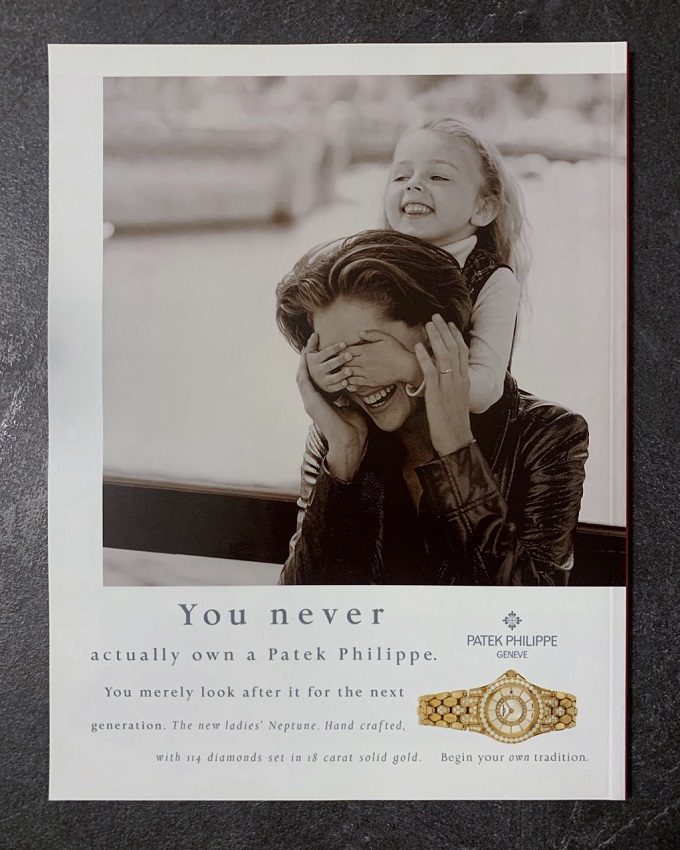
Patek Philippe 'Generations' ad
However, what are the pros and cons of buying vintage versus modern, contemporary pieces? Why might some people prefer to collect one over the other? Or even both!
In this article, I will explore the benefits and drawbacks of each approach. Firstly, before getting into that, I think it is important to understand the definitions.
What is a vintage watch?
A vintage watch is one which is more than 20-25 years old. As time marches on, watches will age, and so more and more watches will become vintage; for this reason, I don’t believe it is right to describe a vintage watch as being from before a particular fixed date. Where a watch is, say, 15 years old, I would suggest it is probably “older”, rather than being deemed “vintage”.
As a side note, the distinction between vintage and antique watches is that antiques are generally considered to be 100 years old or more.
What are the benefits of buying vintage watches?
The obvious place to start is the price – more often than not, prices for vintage watches are far more accessible than prices for new watches because any value depreciation has already happened. For the vast majority of brands, this rule holds true, and whilst there are of course exceptions to the rule (such as vintage Patek Philippe or Rolex), there are often great deals to be found.
This is far and away one of the biggest benefits in choosing to buy vintage (or even just modern pre-owned) watches and is a huge part of why the pre-owned watch market is projected by McKinsey to continue growing by up to 10% annually, worth $32bn by 2025.
Another major bugbear of collectors currently is the dreaded waitlist. Watches from certain brands can be very difficult to acquire brand new, or simply take a long time to arrive after placing an order. This tends to apply to brands such as Patek Philippe, Rolex, and Audemars Piguet – or small independents who might make a watch specifically to order for a collector.
Buying vintage (or again, modern pre-owned) is a super way to avoid having to wait for what you want, although it is worth noting that sometimes this can attract a premium price if the watch is a particularly popular model.
The most exciting reason to buy vintage, in my opinion, is the unparalleled choice and the stories that these watches can tell. Some of these watches can be super rare, from brands that no longer exist such as Universal Genève, and whether it be a vintage Tudor Submariner that used to belong to a professional diver, or perhaps an ‘original’ model of a contemporary reissue of a vintage model, there is invariably an interesting story worth exploring.
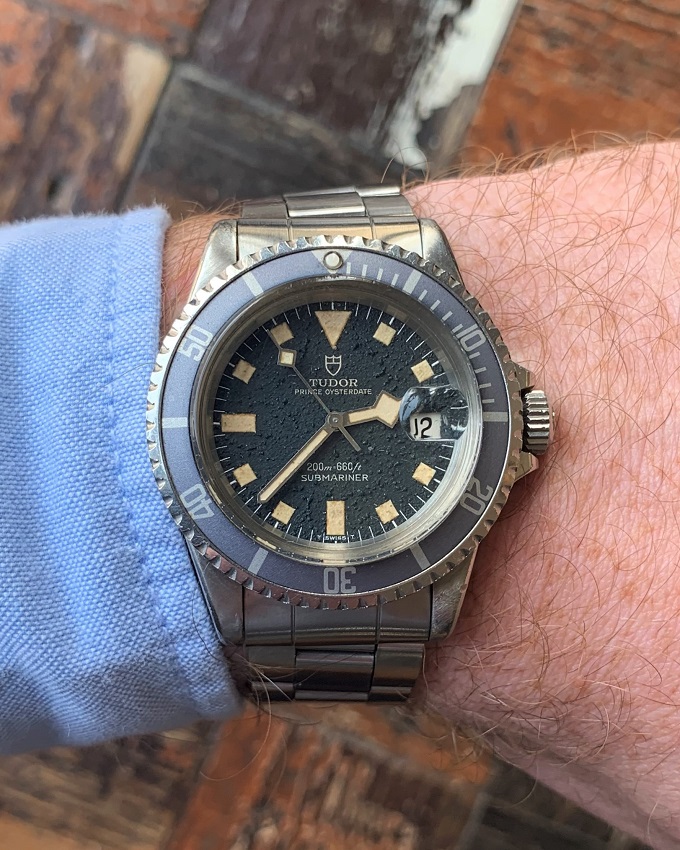
Vintage Tudor Submariner Dive Watch

Dial macro - note the blistering and creamy colour of the markers and hands
Where some people might argue that vintage watches have more character, I think it depends on the definition of “character” – does a contemporary watch lack character, just because it is contemporary?
Absolutely not.
I would argue it possesses a totally different type of character. After all, it is far easier to attach a romanticism for a bygone era, a biography, or a moment, achievement, or figure from history to vintage watches. Obviously applying any of these to a contemporary watch is more of a challenge, but I don’t think this constitutes character in itself.
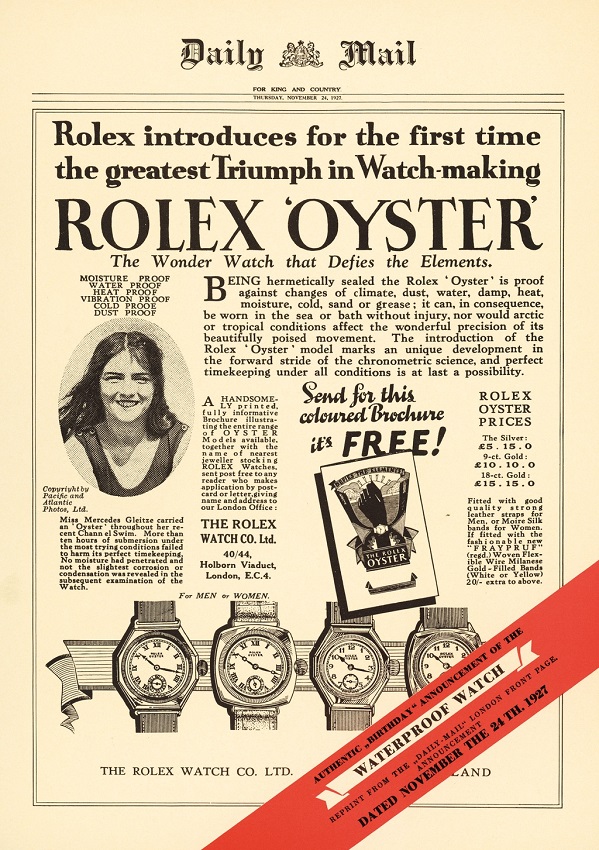
1927 Daily Mail Cover featuring Mercedes Gleitze, photo - Rolex press kit
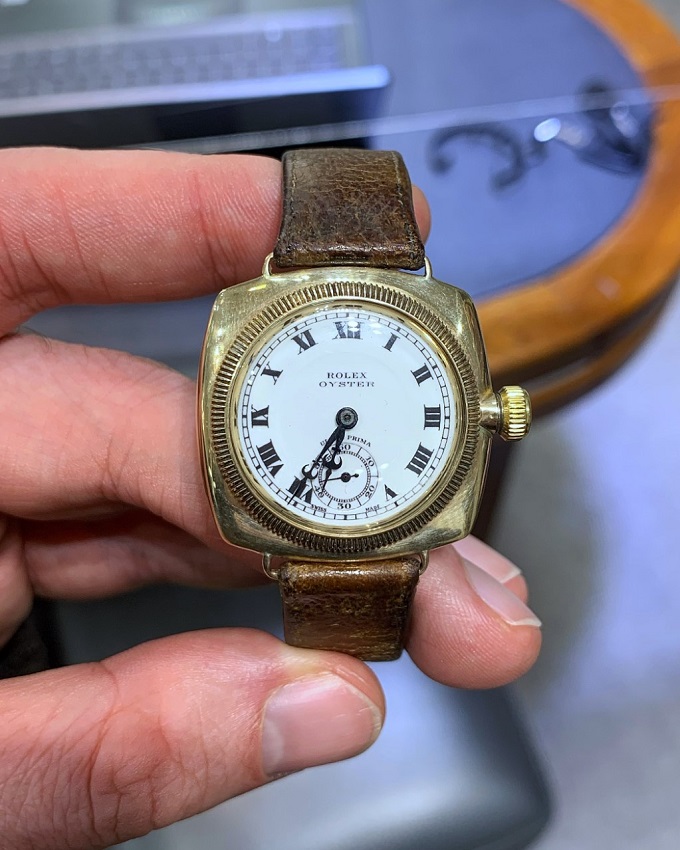
Vintage Rolex Oyster
You might even uncover a hidden gem, or stumble into a watch that becomes far more desirable over time due to other circumstances. For example, up until the beginning of 2021, it was possible to acquire a Cartier CPCP Tortue Monopoussoir for around £15,000.
(For context, Cartier “CPCP”, or Collection Privée Cartier Paris, watches are limited edition watches produced in small runs of 50-500 pieces depending on the model or configuration, that were produced between 1998 and 2008. Taking the point above about vintage watches capturing a moment from history, CPCP watches are a great example of capturing a specific decade in the watchmaking history of Cartier).
Once it became more widely known that the THA ebauche movement in this CPCP Tortue Monopoussoir was developed by F.P. Journe, Denis Flageollet (of De Bethune) and Vianney Halter before they went on to become watchmakers at the forefront of the independent watchmaking scene, prices shot up with the rising interest in independent watchmaking. Now, the same watch commands a price tag of closer to £50,000.
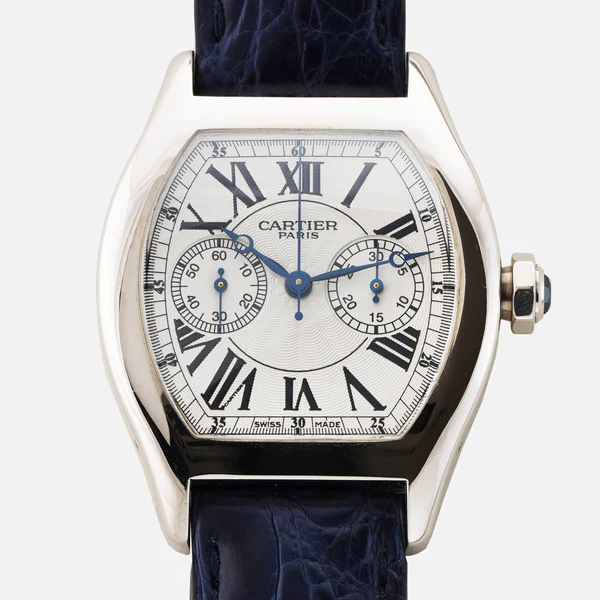
Cartier CPCP Tortue Monopoussior, photo - Subdial.co
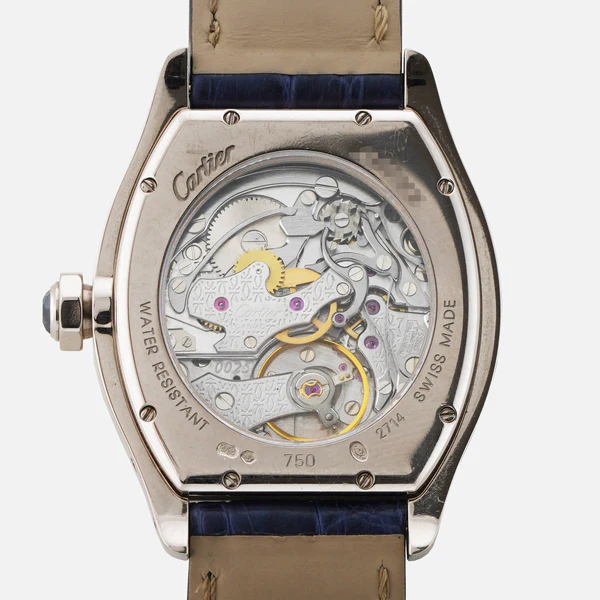
Cartier CPCP Tortue Monopoussior caseback, photo - Subdial.co
What are the drawbacks of vintage watches?
As with many things, buying watches pre-owned, let alone vintage or antique, can come with drawbacks and disadvantages, too. The number one piece of advice would always be to “buy the buyer” – if something doesn’t feel right, or you get a bad feeling in your gut – walk away.
The most obvious likely drawback is the condition of the watch, with the significant potential for scratches and scuffs. This might also extend to the condition of the box and papers (albeit finding a vintage watch with these as a full set can be a challenge!), which might be in poor condition. For some folks this might not be an issue, but for others it could well be – and I count myself in this group.
Scratches and scuffs are a sign of a watch being well-loved and well-worn, and thinking again of the idea of the biography of a watch, can almost visually ‘authenticate’ the story. For example, if the Tudor Submariner mentioned earlier, which was used for many years by a professional diver, was in perfect condition with no scratches and scuffs you would immediately question the validity of the claim. In that instance, would you even want to polish the case, and essentially erase that history?
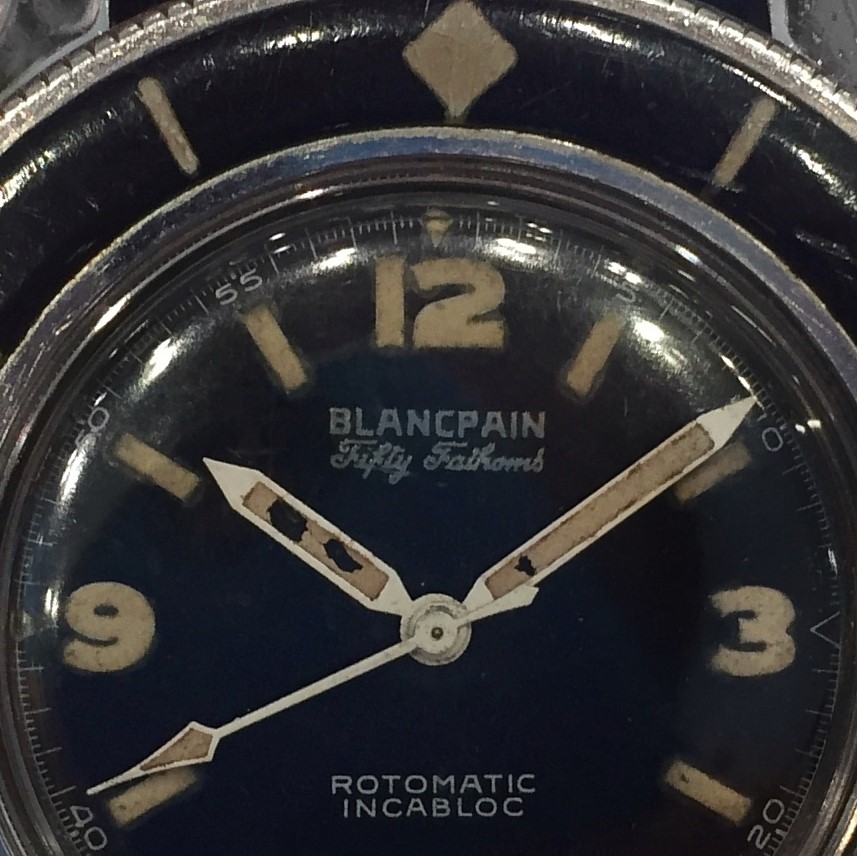
Vintage Blancpain Fifty Fathoms dive watch from 1953 - note the marks on the hands
However, vintage watches aren’t just vintage on the outside. Hands, dials, any lume, and the movement are all likely to be of the same era as well. As such, a lot more TLC may be required for vintage watches versus modern watches, which can benefit from advances in technology and material engineering, such as silicon hairsprings, which came along much later. They are also far more likely to be less resistant to shocks and moisture.
Although less prominent, something else to be aware of is a practice where some individuals attempt to artificially induce the vintage patina that occurs naturally over time – for example using UV light to try and expedite the process of older lume turning a creamier colour, or artificially fading a bezel on a dive watch.
Condition is certainly a key consideration with vintage watches, and generally speaking, originality is paramount for collectors. An unpolished watch (as polishing essentially shaves metal off of the case to remove scratches, so the original shape of the case can be compromised with excessive polishing), with all original parts would be more desirable (and monetarily valuable) than a vintage watch with a polished case, replacement hands and refreshed lume.
What about buying modern watches versus vintage watches?
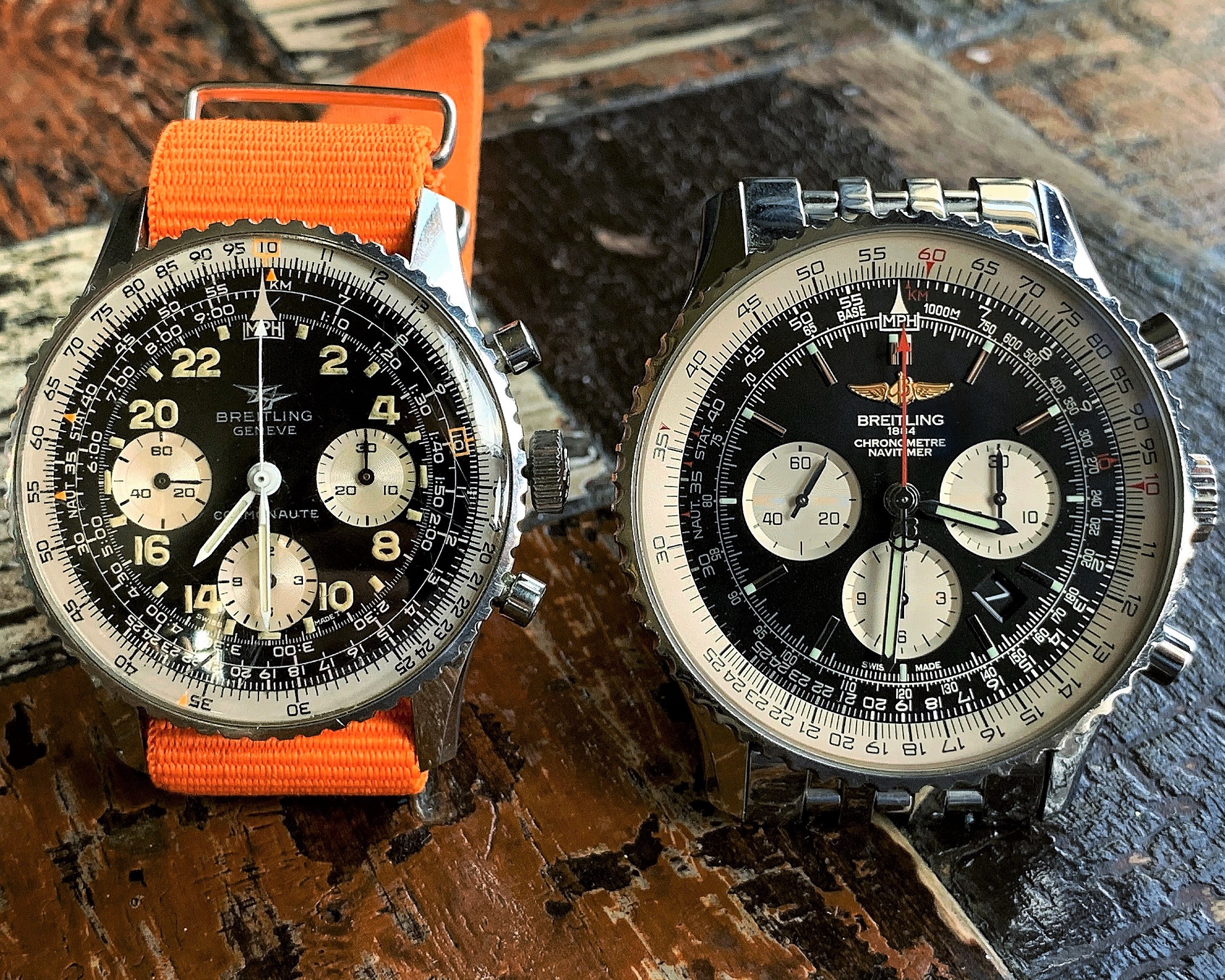
A vintage Breitling Cosmonaute alongside a more recent Breitling Navitimer
There are obviously benefits to buying modern, contemporary watches as opposed to vintage watches, and I suspect that there is a pro to modern watches for each con for vintage watches, and vice versa.
For example, modern watches tend to have a higher price than pre-owned or vintage watches, and the watch will invariably depreciate somewhat over time (unless you are buying a watch with a long waitlist, in which case it is less likely for this to be the case, however the long wait in itself is certainly a drawback).
However, buying from new will ensure the legitimacy of the watch with no need to “by the buyer” (assuming the purchase is through a boutique or authorised retailer which is always recommended), and the watch will come with both a full set of box and papers as well as a warranty.
The watch will also be in mint condition, and benefit from modern materials and technology, which – in theory – will ensure a greater reliability, greater resistance to shocks and moisture, and the watch won’t need servicing to the same extent as a vintage watch.
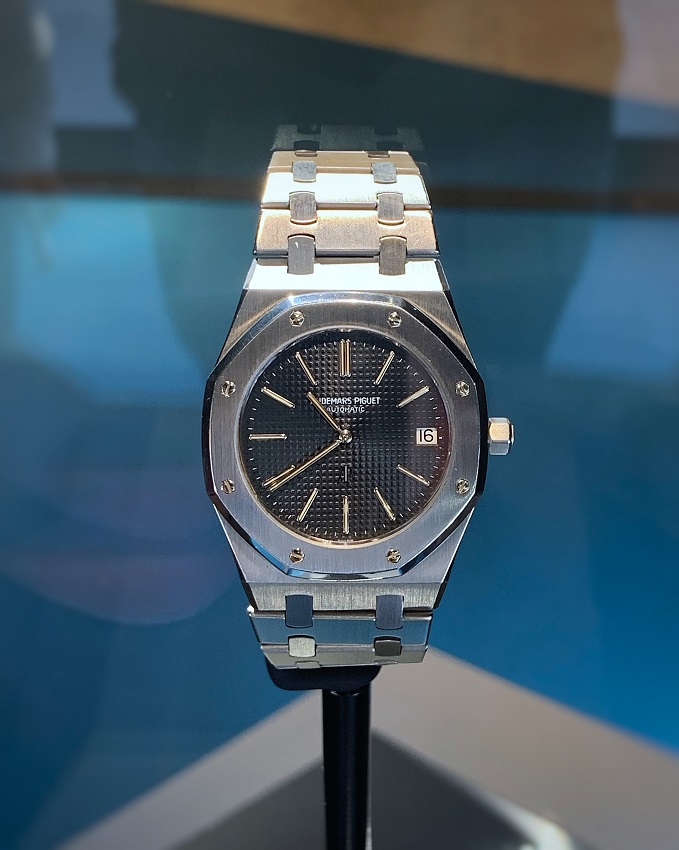
One of the first - a vintage Audemars Piguet Royal Oak 5402
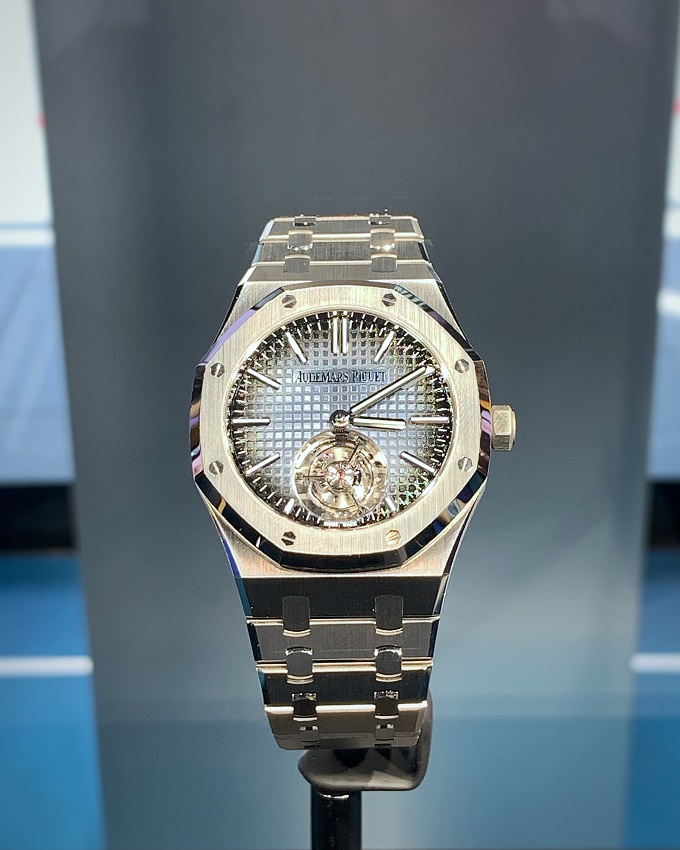
Modern Audemars Piguet Royal Oak 50th anniversary flying tourbillon
To some, mint condition might seem to some a bit… clinical. But sometimes things have a habit of going full circle – mint condition in the right circumstances can vastly increase monetary value, just like for a veteran on Antiques Roadshow in the US, whose mint vintage Rolex Oyster Cosmograph “Paul Newman” reference 6263 was (at the time of airing) worth a colossal $700,000 largely thanks to its condition!
Another benefit is that as the sole owner of a watch, you can be absolutely certain of the biography of the watch, how it has been looked after and treated. There is zero risk of some unscrupulous seller claiming provenance which might be impossible to prove or disprove, or even simply buying a watch from someone which may have been mistreated over the years, with hidden damage you can’t see.
Complimentary to this, it is then possible to build your own biography with a watch, especially if, to paraphrase a particular advertising campaign, you are merely looking after it to pass it to the next generation. Perhaps a watch worn on a wedding day, a dive watch worn diving around the world, or something bought to mark the birth of a child.
In my opinion, the sentimental value of something like this surpasses literally everything.
I have a Citizen EcoDrive watch that belonged to my late Grandad, and whilst I choose not to wear it, it is very much a part of my collection; not a day goes past that I don’t look at it and think of him. My fiancée was recently passed a watch from the 1930s that belonged to her Grandad too – the brand, Sagara, is one with a history that despite our best efforts to discover, appears scant in detail and lost to annals of history (that said if anyone reading this knows anything, please do get in touch!)
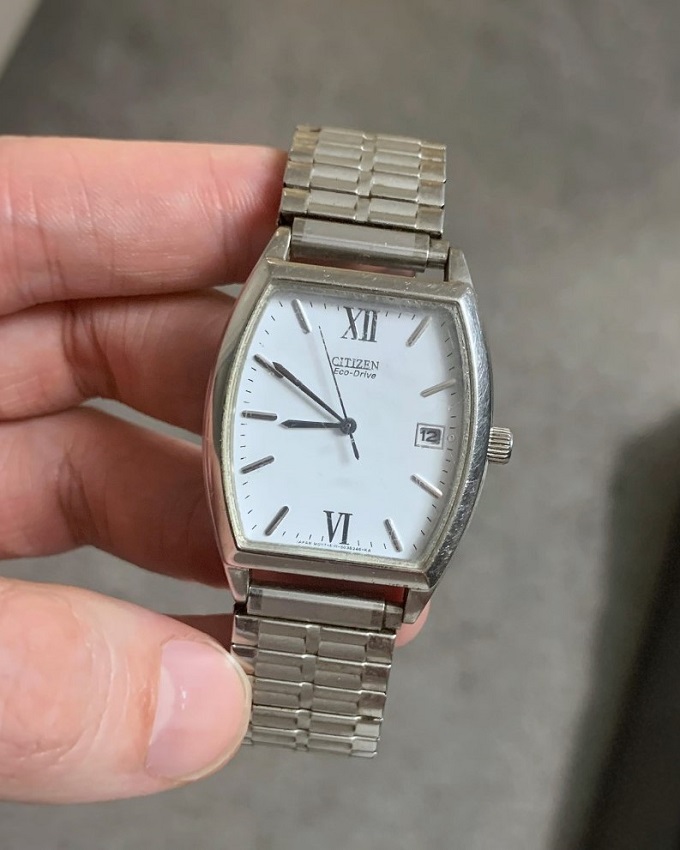
Citizen EcoDrive
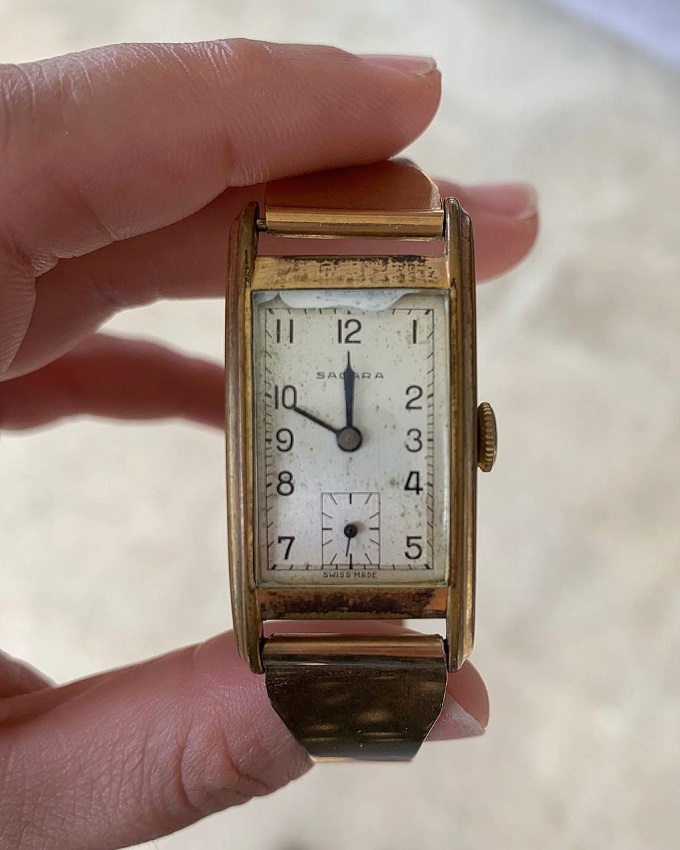
Sagara
Neither of these watches are worth a great deal monetarily, but to us, they are worth the world.
In Summary
Hopefully this will help give some insight into different considerations when buying vintage watches versus modern and contemporary pieces, different things to consider and some things to look out for.
Ultimately, every collector will have their own criteria, likes and dislikes that they choose to collect around, and different weightings that they apply to these criteria.
We are all different, and ultimately these differences go on to shape everyone’s own collecting journey and collection, and this diversity is one of the greatest things about the watch community – after all, if we all liked the same watches and collected the same things, it would be a very boring hobby!
If you have any questions, please get in touch via our Contact page, or via our Instagram.
You might also be interested in:
- My Spotlight: Tudor Submariner 9411-0
- Antiques Roadshow Watches
- My Spotlight: Breitling Cosmonaute vs Navitimer B01
- Watch Stationery and Gift Ideas
- Watch Books, Watch Boxes and more at the Watch Affinity Shop on Amazon (commissions earned)
As an Amazon Associate, I earn from qualifying purchases – thank you for your support

